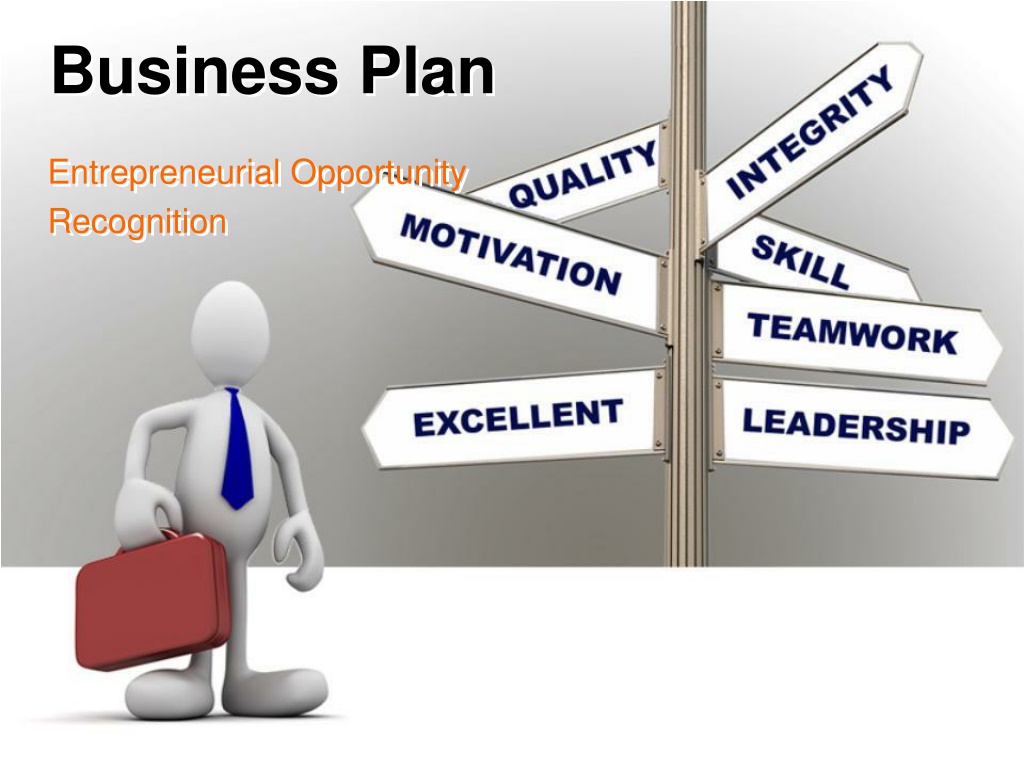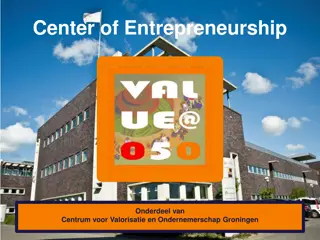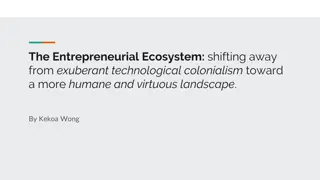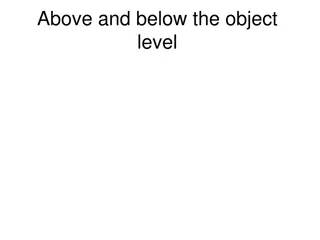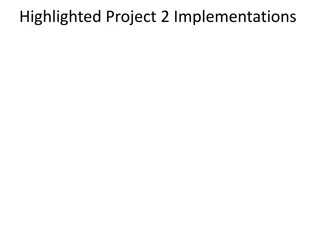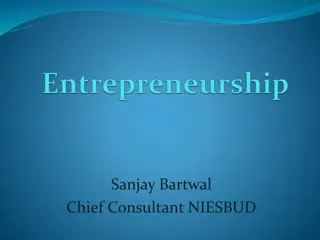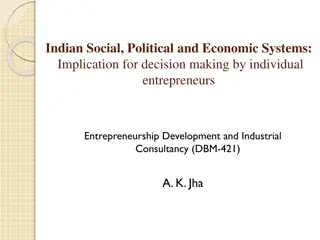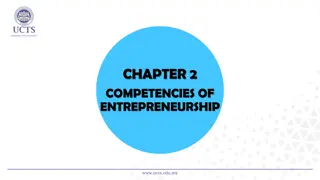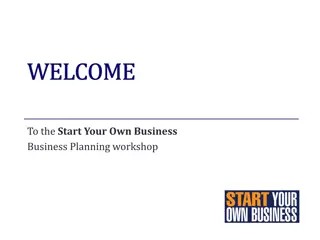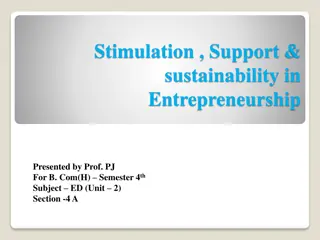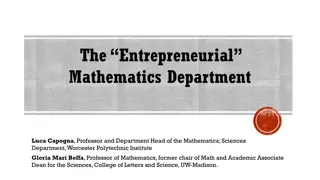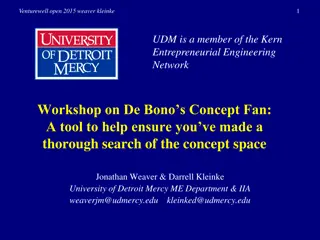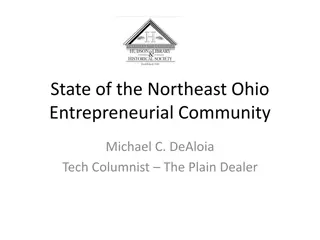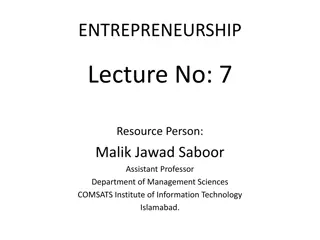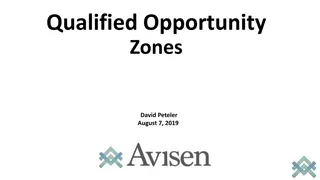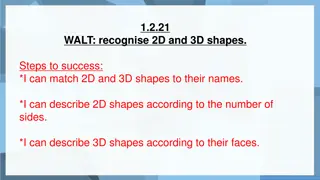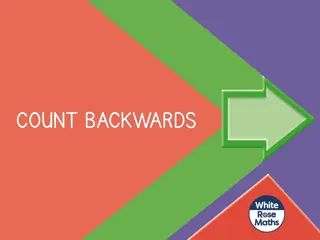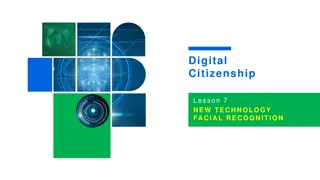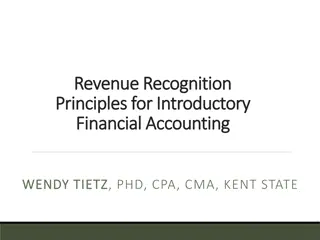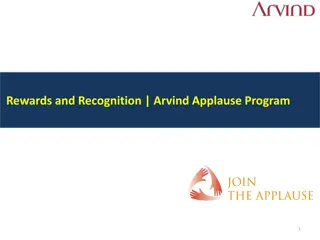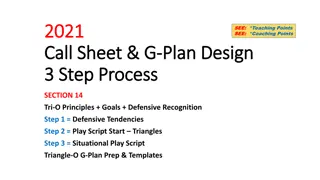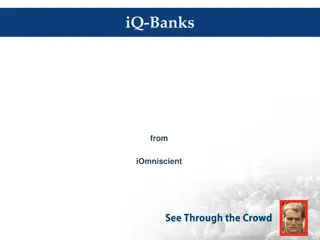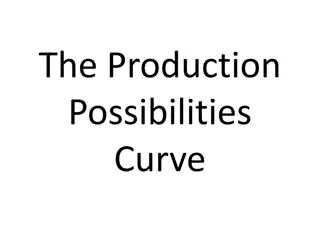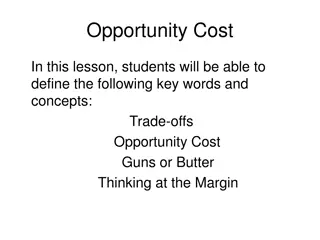Understanding Entrepreneurial Opportunity Recognition
Entrepreneurial opportunity recognition is crucial for starting a successful business. It involves identifying favorable circumstances that create the need for a new product, service, or business idea. Recognizing opportunities can be done by observing trends, solving problems, and finding gaps in the marketplace. Personal characteristics like prior experience, social networks, cognitive factors, and creativity play a significant role in recognizing these opportunities effectively.
Download Presentation

Please find below an Image/Link to download the presentation.
The content on the website is provided AS IS for your information and personal use only. It may not be sold, licensed, or shared on other websites without obtaining consent from the author. Download presentation by click this link. If you encounter any issues during the download, it is possible that the publisher has removed the file from their server.
E N D
Presentation Transcript
Business Plan Entrepreneurial Opportunity Recognition
Entrepreneurial Opportunity Recognition Entrepreneurship process starts with opportunity recognition and idea generation icon_lg_tagline
Entrepreneurial Opportunity Recognition What is an Opportunity? An opportunity is a favorable set of circumstances that creates the need for a new product, service, or business idea Most entrepreneurial firms are started in one of two ways: An entrepreneur decides to start a firm, searches for and recognizes an opportunity, then starts a business. An entrepreneur recognizes a problem or an opportunity gap and creates a business to fill it.
What is an Opportunity? Opportunity is NOT the same as an idea.
Recognizing Opportunities Three Ways
1. Observing Trends Trends Suggesting Business or Product Opportunity Gaps
2. Solving a Problem Sometimes identifying opportunities simply involves noticing a problem and finding a way to solve it. These problems can be pinpointed through observing trends and through more simple means, such as intuition, serendipity, or chance. For example, Symantec Corp. created Norton antivirus software to guard computers against viruses. Some business ideas are clearly initiated to solve a problem. 2-7
3. Finding Gaps in the Marketplace A gap in the marketplace is often created when a product or service is needed by a specific group of people but doesn t represent a large enough market to be of interest to mainstream retailers or manufacturers. This is the reason that small clothing boutiques and specialty shops exist. The small boutiques, which often sell designer clothes or clothing for hard-to-fit people, are willing to carry merchandise that doesn t sell in large enough quantities for Wal-Mart, GAP, or JC Penney to carry.
Personal Characteristics Characteristics that tend to make some people better at recognizing opportunities than others Prior Experience Social Networks Cognitive Factors Creativity
Recognizing Opportunities Connection between an awareness of emerging trends and the personal characteristics of the entrepreneur
Techniques For Generating Ideas Brainstorming Focus Groups Surveys
Brainstorming Brainstorming Is a technique used to generate a large number of ideas and solutions to problems quickly. A brainstorming session typically involves a group of people, and should be targeted to a specific topic. Rules for a brainstorming session: No criticism. Freewheeling is encouraged. The session should move quickly. Leap-frogging is encouraged.
Focus Groups Focus Group A focus group is a gathering of five to ten people, who have been selected based on their common characteristics relative to the issues being discussed. These groups are led by a trained moderator, who uses the internal dynamics of the group environment to gain insight into why people feel they way they do about a particular issue. Although focus groups are used for a variety of purposes, they can be used to help generate new business ideas.
Surveys A survey is a method of gathering information from a sample of individuals. The sample is usually just a fraction of the population being surveyed. The most effective surveys sample a random portion of the population, meaning that the sample is not selected haphazardly or only from people who volunteer to participate. The quality of survey data is determined largely by the purpose of the survey and how it is conducted. Surveys generate new product, service, and business ideas because they ask specific questions and get specific answers.
Protecting Ideas From Being Lost or Stolen Step 1 The idea should be put in a tangible form such as entered into a physical idea logbook or saved on a computer disk, and the date the idea was first thought of should be entered. Step 2 The idea should be secured. This may seem like an obvious step, but is one that is often overlooked. Step 3 Avoid making an inadvertent or voluntary disclosure of an idea, in a manner that forfeits the right to claim exclusive rights to it.
Case Study Sofia s passion was candy. She wanted to make and sell her own candy, but her family told her to choose something more stable. She took an office job, but her position was downsized. She considered her love of candy, and a little research showed that there was a market for her interests. There was one problem; however, she never made candy outside of her home and was not sure how to sell it in mass. Her family told her that she lacked the necessary skills to create her own business, and she found another office job.
Case Study Sofia s passion was candy Her family told her to choose something more stable She took an office job, but her position was downsized She never made candy outside of her home
